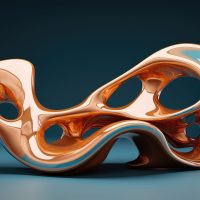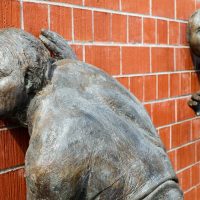Discovering the Evolution of Modern Bronze Sculpture
Dive into the world of modern bronze sculpture, tracing its evolution from traditional methods to contemporary expressions of artistry and form.
Modern Sculpture, particularly in the realm of bronze sculpture, marks a transformative period spanning from the 1860s to the 1970s. During this era, artists shattered conventional norms, ushering in a renaissance in sculptural artistry. Notable figures like Pablo Picasso, Peter Voulkos, George E. Ohr, and Kenneth Price played pivotal roles in this artistic revolution, crafting three-dimensional marvels by amalgamating disparate elements into cohesive wholes. Their innovative approach extended to materials, encompassing ceramics, clay, bronze, wood, and more.
The evolution of modern sculpture, including bronze sculpture, is deeply intertwined with successive art movements such as Geometric Abstraction, Cubism, De Stijl, Futurism, Dadaism, Surrealism, Suprematism, Constructivism, Minimalism, Abstract Expressionism, and Pop-Art. Surrealism, for instance, expanded the definition of sculpture, introducing concepts like “involuntary sculpture,” challenging traditional boundaries.
Key themes like reduction and abstraction gained prominence in the 1930s and 1940s, championed by artists like Gaston Lachaise, Sir Jacob Epstein, Alberto Giacometti, Henry Moore, Julio González, Pablo Serrano, and Jacques Lipchitz. This trend continued into later decades, with artists like Carl Andre and John Safer infusing motion and monumentality into their works, emphasizing purity of line.
By the 1960s, Abstract Expressionism, Geometric Abstraction, and Minimalism took center stage in the art world. Noteworthy creations from this period include David Smith’s ‘Cubi’ works, John Chamberlain’s large-scale sculptures, and Mark di Suvero’s environmental installations.
A significant milestone in modern bronze sculpture was Picasso’s “Chicago Picasso” unveiled in 1967, a monumental abstract bronze structure that sparked contemplation and interpretation among viewers. Another iconic piece, Henry Moore’s “Knife Edge – Two Piece,” erected in 1962 near the House of Lords in London, exemplified the essence of modern sculpture, emphasizing form over narrative.
Bronze sculpture’s enduring appeal lies in its longevity and malleability. Artists employ various casting processes like sand casting and centrifugal casting to bring their visions to life. The lost-wax method, a traditional yet prevalent technique, involves meticulous sculpting in wax, followed by ceramic and sand coatings to create detailed molds for bronze casting.
As a medium, bronze sculpture transcends time and perspective, offering a canvas for artists to express diverse narratives and worldviews. Its enduring popularity stems from its ability to capture nuances of emotion, motion, and historical significance, making it a timeless embodiment of artistic evolution.
2 responses to “Discovering the Evolution of Modern Bronze Sculpture”
Leave a Reply
Bring Your Vision to Life with Custom Sculpture Services
Let's Create Something Extraordinary Together
Have ideas or questions about a sculpture project? Interested in a quotation for our bespoke sculpture services? Feel free to drop us a message using the form provided. We're excited to collaborate and transform your artistic concepts into stunning realities!









Nicholas - 11 years
Hello! I am a Greek art dealer, dealing with extraordinary art. I enjoy sharing inspiration and ideas! Please dedicate one minute and follow this link for more ideas:
bit.ly/greekartdealer
satendar singh - 10 years
dear sir i am sculptur caster all matel and fibar glass